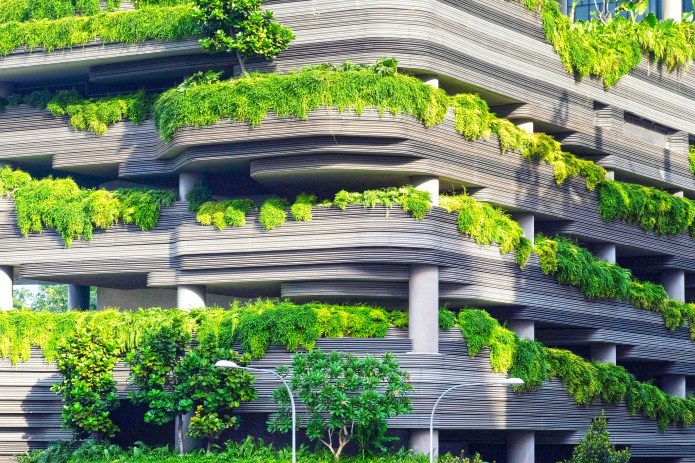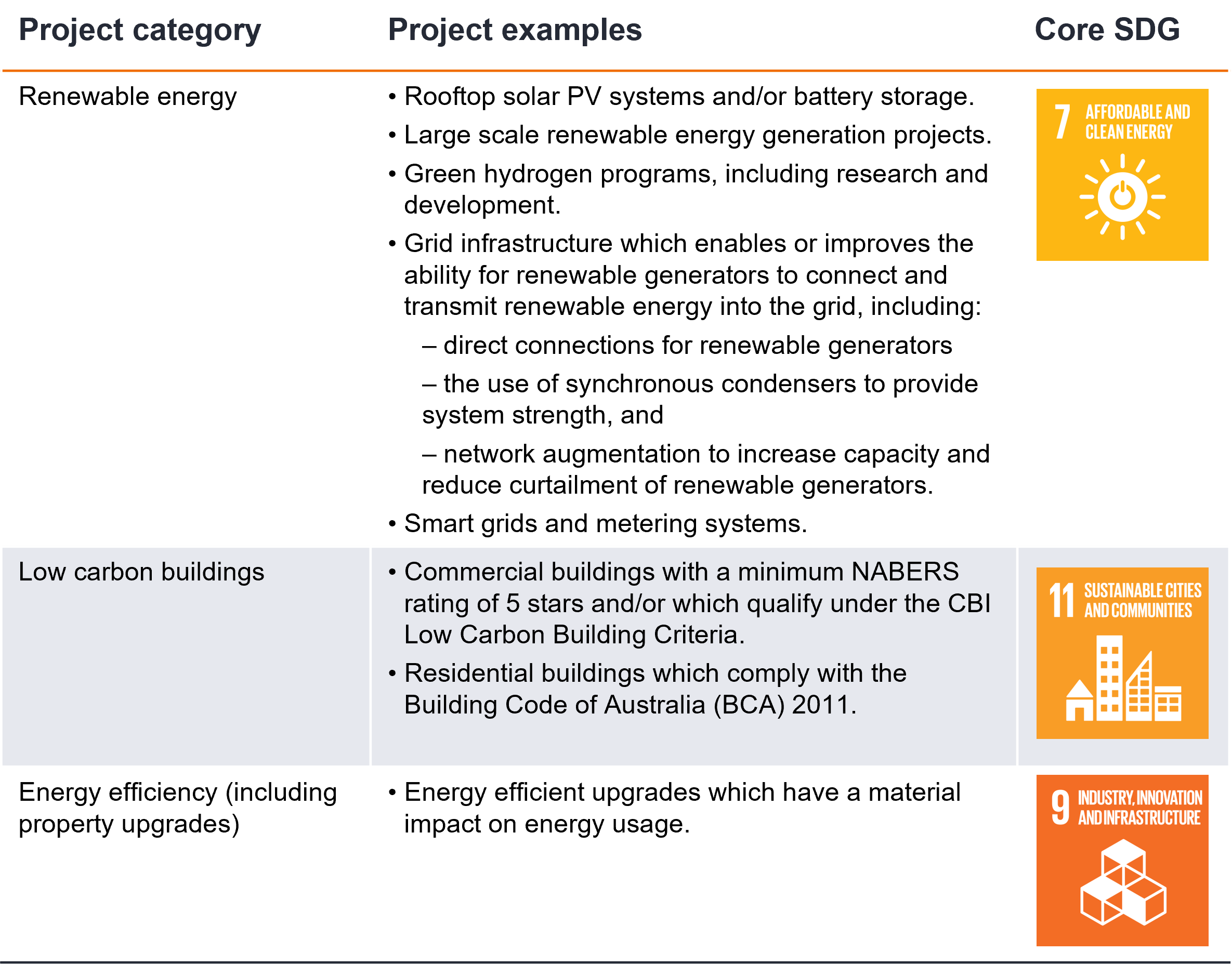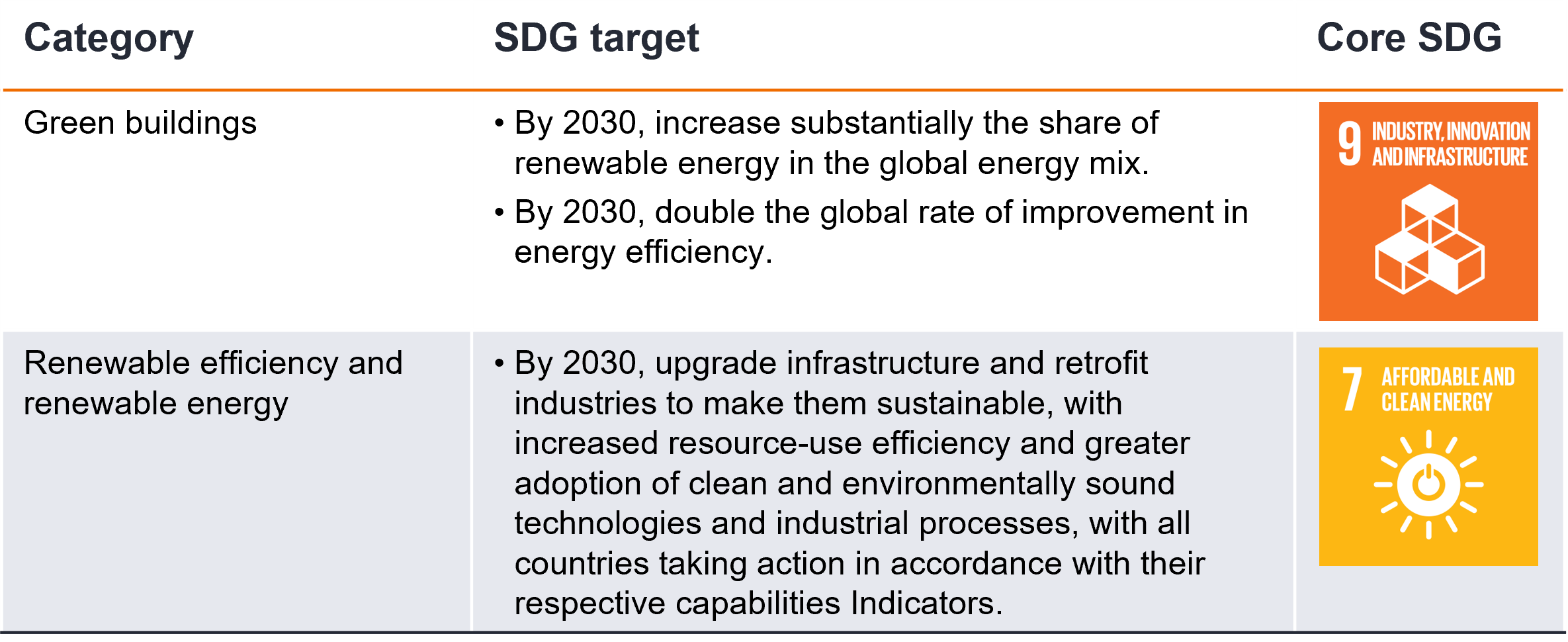Sustainable buildings: Beyond solar panels and water tanks
Liz Harrison, Fixed Interest Strategist - ESG in the Australian Fixed Interest team, discusses how green finance can help to create sustainable buildings and explores the different types of investments available to investors in this sector.

9 minute read
Key takeaways:
- The development of new buildings and, once completed, the energy consumption of these buildings are huge contributors to global GHG emissions.
- Investors can assist in reducing this by directing capital towards government and industry projects that seek to create more sustainable buildings through reducing embodied carbon and improving energy efficiencies.
- Domestic debt instruments are available to support the theme of ‘Sustainable Buildings’.
According to the World Green Building Council, buildings and construction are currently responsible for 39% of global energy related carbon emissions: 28% from energy required for heating, cooling and electricity, and the remaining 11% from embodied carbon i.e., materials and construction.
As Australia seeks to build more houses to address the current shortage, in addition to ongoing activity in commercial infrastructure, more needs to be done to help the construction industry reach net zero.
Energy related carbon emissions are the easiest to tackle with many energy efficient initiatives and the use of renewables for electricity generation available. However, the biggest headwind facing this sector is embodied carbon. The availability and scalability of low-carbon materials remains a challenge as the industry is in a nascent stage. Supply is limited and the cost is high compared with traditional raw materials.
As the industry works through the ‘hard to abate’ sectors, such as cement and steel, there are some ways to make buildings more sustainable now. These include the use of:
- Rooftop solar and solar thermal systems for water heating
- electrification using renewables
- building orientation to make the most of the sun and shield from wind
- insulating walls, roofs and floors
- use double glazing on windows
- use locally sourced materials to reduce transportation, and
- reduce, reuse and recycle building materials where possible.
What can investors do to help?
The Janus Henderson Australian Fixed Interest team has identified ‘sustainable buildings’ as one of its ‘People and Planet’ themes and buys ‘use of proceeds’ green bonds, sustainability bonds and bonds of issuers where capital is directed to improving energy efficiency in homes and creating more sustainable buildings.
To improve our country’s infrastructure and make our buildings more sustainable, collaborative efforts from a variety of stakeholders will be required. While state governments are likely to do some of the heavy lifting through increasing industry standards at the time of initial build and through their own housing projects, industry can also play a part. Regardless of which parties are involved, these projects require funding. Investors can play a role by putting their capital towards such projects through investing in funds that invest in this sector.
In addition to investing in these bonds, Janus Henderson’s Australian Fixed Interest team has a role to play through our active engagement. By having conversations with issuers and offering them support to come to market, we seek to increase the supply of public debt that has proceeds directly linked to creating more sustainable buildings. We also discuss climate targets with issuers in engagement meetings we conduct.
State Governments
On 1 October 2023, New South Wales (NSW) was the first state to introduce the ‘Sustainable Buildings SEPP’ which aims to reduce water usage and greenhouse gas (GHG) emissions across NSW. This new regulation, applicable during the construction of buildings, applies to both commercial and residential buildings (excluding three climate zones and apartment buildings up to five storeys). The new standards require:
Commercial Buildings:
- Measure and report embodied emissions for all developments.
- Adhere to minimum energy and water standards for large commercial development.
- Developments to be ‘all electric’ or capable of converting to operate without fossil fuels by 2035.
- An objective of waste minimisation.
Residential Builds:
- To increase their ratings from 5.5/6 stars to 7 stars on the Nationwide House Energy Rating Scheme.
- Reduce GHG emissions by between 7% and 11% (location dependent).
While it is likely that other states will enhance regulatory requirements on new builds, this is not something investors can direct capital towards. However, through the states sustainability frameworks, there is often capital being used for improving energy efficiency in homes. Of note is Treasury Corporation of Victoria’s sustainability bonds which has an asset pool with a large weighting towards ‘Victoria’s Big Housing Build’. Over half of the pool is dedicated to the building of 12,000 new 7-star energy rated social houses. In addition, the Victorian government issues grants towards solar homes, which includes grants for panels, solar hot water, batteries, and household energy efficiency upgrades.
The following projects are identified in the Victorian and NSW sustainability frameworks, from which their sustainability bonds are issued.
Victoria sustainability framework

Source: Treasury Corporation of Victoria, September 2021
NSW sustainability framework

Source: NSW State of Environment
Universities
Some of the universities across our country are leading the way on sustainability. La Trobe University and University of Tasmania are two such examples, both of which have issued green bonds which we hold in our Sustainable Credit Fund and across other strategies. In terms of our targeted theme ‘Sustainable buildings’ they are participating in the following ways:
La Trobe University plan to use 100% renewables by 2029, with 30% of their requirements being self-generated through the installation of solar panels on their roofs, and the building of a solar farm adjacent to their Bundoora campus. They are focused on reducing their carbon footprint through energy efficient building upgrades and a minimum 5-star green rating for all new builds.
With new buildings they use cross laminated timber (CLT) which reduces embodied carbon compared to traditional methods. The benefits of CLT are that it is renewable, so throughout its growth it is capturing carbon. During the construction process it requires less water, energy and fossil fuels, resulting in a lower carbon profile. The timber is fabricated to a specific size so there is less waste when creating the material and given the pre-fabricated nature of the project it allows for quick build times, again reducing energy for the build. At end-of-life, CLT allows for simpler demolition with less construction waste and more opportunities for reuse/recycling of the materials.
La Trobe have also committed to replant multiple trees for every one tree that is removed during the clearing for a new building.
University of Tasmania is moving its Sandy Bay campus into the Hobart CBD. Already certified carbon neutral since 2016, the $550m project (which runs through to 2030) presents a significant opportunity to further contribute to decarbonisation. The university aims to reduce the upfront embodied carbon in its building program through the utilisation and adoption of low carbon construction practices and materials (including low carbon cement /concrete, CLT, recycled materials etc).
The capital raised from their green bonds is being used to finance campus buildings, targeting a 20% or better reduction in upfront carbon emissions, relative to industry standard. As to the achievability of this target, the university’s building projects in the north of the island, had achieved emissions reductions in the low 30%’s. Wider adoption of such innovative practices will be a game-changer for the broader Australian construction industry, and a significant positive as it relates to achievement of longer-term economy-wide emissions reduction commitments.
Real estate investment trusts
Real estate investment trusts (REITs) are large owners and builders of real estate, and therefore are key players in building, upgrading and maintaining sustainable buildings.
Development and management property group Mirvac pride themselves on their sustainability credentials. Their climate targets include zero waste to landfill and net positive carbon (Scope 1-3) and water by 2030.
Mirvac states they are committed to using sustainable and low-carbon materials in new developments. They are actively engaged in selecting low-carbon and sustainable materials for their construction projects such as recycled content, responsibly sourced timber, and low-carbon concrete alternatives, and promoting the use of recycled and renewable materials. Mirvac also incorporates sustainable design principles into projects to minimise embodied carbon. This includes optimising building layouts to maximise energy efficiency, using passive design strategies, and integrating renewable energy technologies to reduce reliance on carbon-intensive energy sources.
While we like this issuer’s overall sustainability framework, accessing ‘use of proceeds’ bonds that direct capital to specific green projects is more challenging. As it stands, they only have non-green bonds in Australian currency, with the lone green bond on issuance being in Hong Kong Dollars.
While arguably a laggard to Mirvac, but still exhibiting strong ESG credentials, Vicinity Centres also aims to be net zero by 2030 (achieving a 41% reduction since 2016). They have recently invested $73m to deliver Australia’s largest solar installation program across their shopping centres, and in FY21 managed to recycle 51% of their total generated waste.
Investors can access direct investment in the sustainable buildings theme through Vicinity Centre’s green bond which was issued in May 2022. The proceeds of this bond were used to finance projects and assets in line with their Sustainability Finance framework (and qualify as eligible under ICMA’s Green Bond Principles). This includes financing or refinancing buildings with a minimum 5-star NABERS energy rating or above, of which they have three eligible assets including one which holds the highest rating possible (6 stars).
The Banks’ green and sustainable bonds
Many of the banks (including the 4 majors and smaller banks such as Bank Australia, Bendigo Bank, and RACQ) are now offering, at a discount, ‘green mortgages and loans’ for customers. The proceeds of the loan are to be used to buy and install eligible small-scale renewables such as solar panels, battery packs and electric vehicle charging stations at the property. To fund these loans and mortgages they usually become a part of the assets pool in the bank’s green bond and/or sustainable bond program. Commonwealth Bank of Australia for one has also offered up ‘green’ term deposits for institutional investors.
Conclusion
Progress towards building and upgrading more sustainable buildings can be helped along by investors willing to allocate capital to this space through:
- Direct ‘use of proceeds’ bonds, channelled specifically to the development of ‘green buildings’, including universities, REITs and green or sustainable state government bonds.
- Investment in ‘green bonds’ by banks where capital is allocated to households for energy efficient upgrades to their properties.
- Engagement/stewardship activity undertaken by managers like Janus Henderson with key players in the building industry.
All opinions and estimates in this information are subject to change without notice and are the views of the author at the time of publication. Janus Henderson is not under any obligation to update this information to the extent that it is or becomes out of date or incorrect. The information herein shall not in any way constitute advice or an invitation to invest. It is solely for information purposes and subject to change without notice. This information does not purport to be a comprehensive statement or description of any markets or securities referred to within. Any references to individual securities do not constitute a securities recommendation. Past performance is not indicative of future performance. The value of an investment and the income from it can fall as well as rise and you may not get back the amount originally invested.
Whilst Janus Henderson believe that the information is correct at the date of publication, no warranty or representation is given to this effect and no responsibility can be accepted by Janus Henderson to any end users for any action taken on the basis of this information.